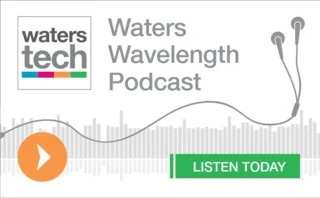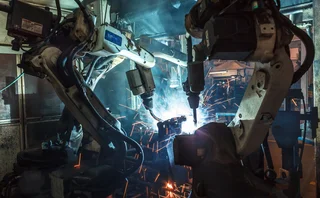Top 10 Features of 2014: A Year in Headlines, Part 2
Discover which stories stood out in 2014.

Part 1 of this series can be found here.
5. Bond Trading Resists Electronification, But for How Long?
After years of resistance to electronic trading, the bond market is finally moving away from a principal-based trading model, which involves buy-side firms asking dealers for quotes. The inefficiency of this model and poor liquidity has forced the buy side to seek alternative systems that would allow them to trade without moving the market and without informing the banks of their intentions. Dark-pool mechanisms have been developed to try and solve this issue as they allow liquidity holders to connect to one another anonymously, but is this really the best option for the bond market?
4. In Spain, Technology Charts 'Bad Bank' Path
The European "bad bank" model is a strange proposition that Tim Bourgaize Murray examines in this feature dedicated to the Spanish market. The concept is to bring an accessible and stabilizing mechanism to allow ailing banks the ability to manage down toxic assets. Spain’s Sareb is just that: an institution credible enough to receive national and supranational funding and manage very complex transactions, but light enough to seemingly come into being overnight, and wind down almost as quickly.
3. Take Away Spreadsheets? From My Cold, Dead Hands
Automation is a recurring topic in the pages of Waters but this time Anthony Malakian investigates the downside of firms’ over-reliance on Microsoft Excel processes. Despite being partly responsible for the “London Whale” scandal that saw JPMorgan lose $6 billion on a poor series of credit default swap index (CDX) transactions, Excel spreadsheets are still, and will continue to be, widely used at buy-side firms in the future although new regulations, technological advancements, and risk management concerns are pushing for new ways to lessen the dependency on these archaic solutions.
2.CAT Conundrum: SROs, Vendors Vie to Build Consolidated Audit Trail
It was only after the 2010 Flash Crash that everyone realized that regulators of the largest capital market in the world didn’t have a consolidated view across all trading venues. Thanks to the US Securities and Exchange Commission (SEC) Rule 613, this glaring issue is now resolved as the consolidated audit trail, or CAT, is finally coming into focus. Dan DeFrancesco explores the biggest hurdles of building and running a platform capable of tracking and storing information on every order, cancellation, modification and trade execution for exchange-listed equities and options in the US markets.
1. Slow Burn: SEFs Make Small Gains as US Market Adjusts to Electronic Trading
The big story of this year is about swap execution facilities (SEFs) and the missed opportunity to transform the US derivatives market. Almost a year later, nothing has really changed. But while SEFs may not have been the immediate success that regulators had hoped for, they no longer have a question mark over their existence, writes James Rundle. Even if their rise has been a slow burn rather than a big bang, volumes might still be on the upswing for 2015 as many firms are starting to use aggregators provided by the sell side, and other regulatory jurisdictions begin to introduce their own implementations of the Group of 20 agreements on derivatives.
Only users who have a paid subscription or are part of a corporate subscription are able to print or copy content.
To access these options, along with all other subscription benefits, please contact info@waterstechnology.com or view our subscription options here: https://subscriptions.waterstechnology.com/subscribe
You are currently unable to print this content. Please contact info@waterstechnology.com to find out more.
You are currently unable to copy this content. Please contact info@waterstechnology.com to find out more.
Copyright Infopro Digital Limited. All rights reserved.
As outlined in our terms and conditions, https://www.infopro-digital.com/terms-and-conditions/subscriptions/ (point 2.4), printing is limited to a single copy.
If you would like to purchase additional rights please email info@waterstechnology.com
Copyright Infopro Digital Limited. All rights reserved.
You may share this content using our article tools. As outlined in our terms and conditions, https://www.infopro-digital.com/terms-and-conditions/subscriptions/ (clause 2.4), an Authorised User may only make one copy of the materials for their own personal use. You must also comply with the restrictions in clause 2.5.
If you would like to purchase additional rights please email info@waterstechnology.com
More on Emerging Technologies
Bloomberg expands GenAI summary options on Terminal
The additions include an expansion of its AI-powered news summaries, as well as a new AI summary tool for company-related news content.
AI enthusiasts are running before they can walk
The IMD Wrap: As firms race to implement generative and agentic AI, having solid data foundations is crucial, but Wei-Shen wonders how many have put those foundations in.
Buy-side data heads push being on ‘right side’ of GenAI
Data heads at Man Group and Systematica Investments explain how GenAI has transformed the quant research process.
Jump Trading spinoff Pyth enters institutional market data
The data oracle has introduced Pyth Pro as it seeks to compete with the traditional players in market data more directly.
Treasury market urged to beef up operational resilience plans
NY Fed panel warns about impact of AI and reliance on critical third parties.
Waters Wavelength Ep. 339: Northern Trust Asset Management’s Jan Rohof
This week, Jan Rohof from Northern Trust Asset Management joins to discuss how asset managers and quants get more context from data.
EY and Microsoft partner to bring agentic AI to risk management
The two firms are part of a deal to bring agentic AI processes to core operations like lending, servicing and risk, starting at Eurobank.
T. Rowe taps Genesis, Cusip lawsuit, FanDuel-CME tie-up, and more
The Waters Cooler: Tokenization and private markets, EuroCTP-BMLL, StateStreet-PriceStats, and more.







